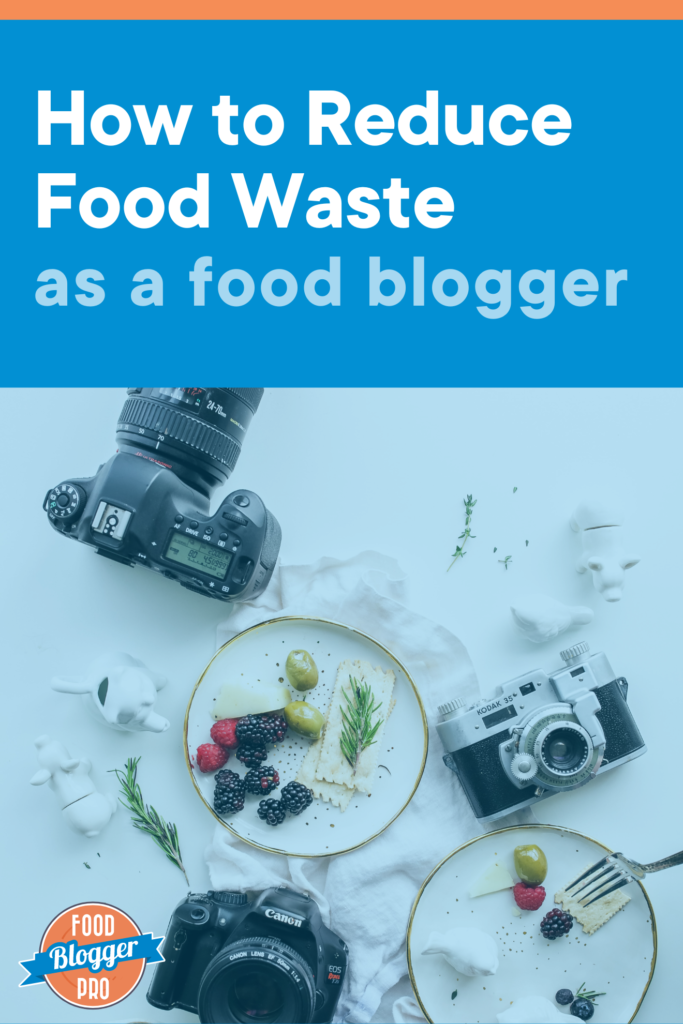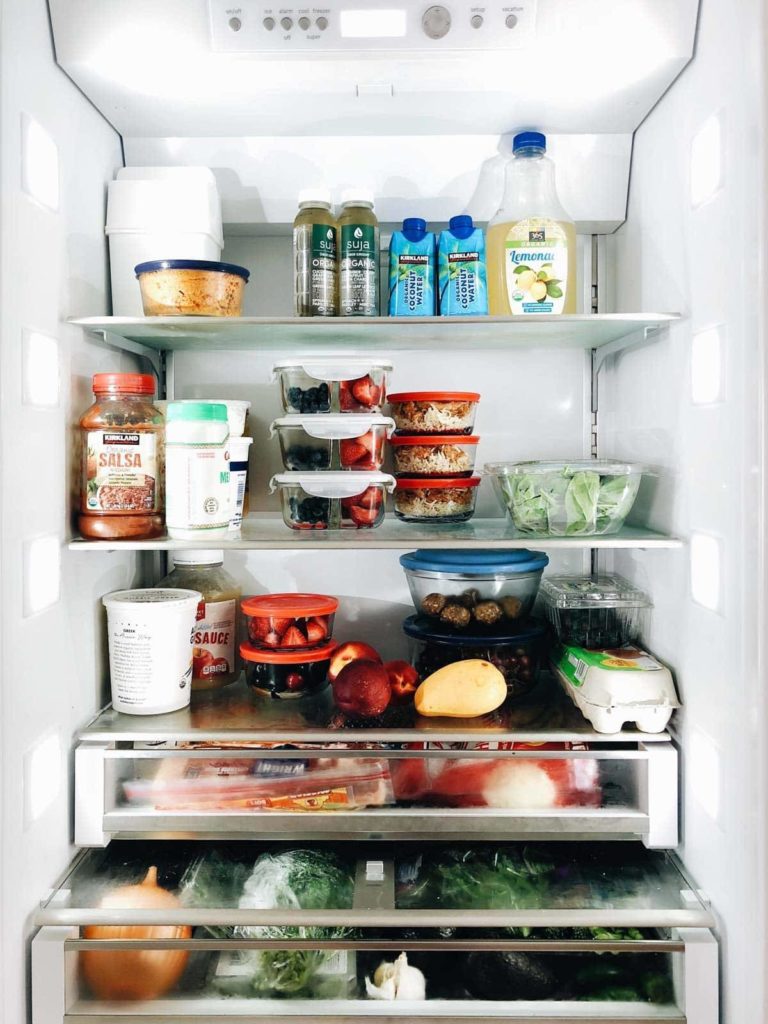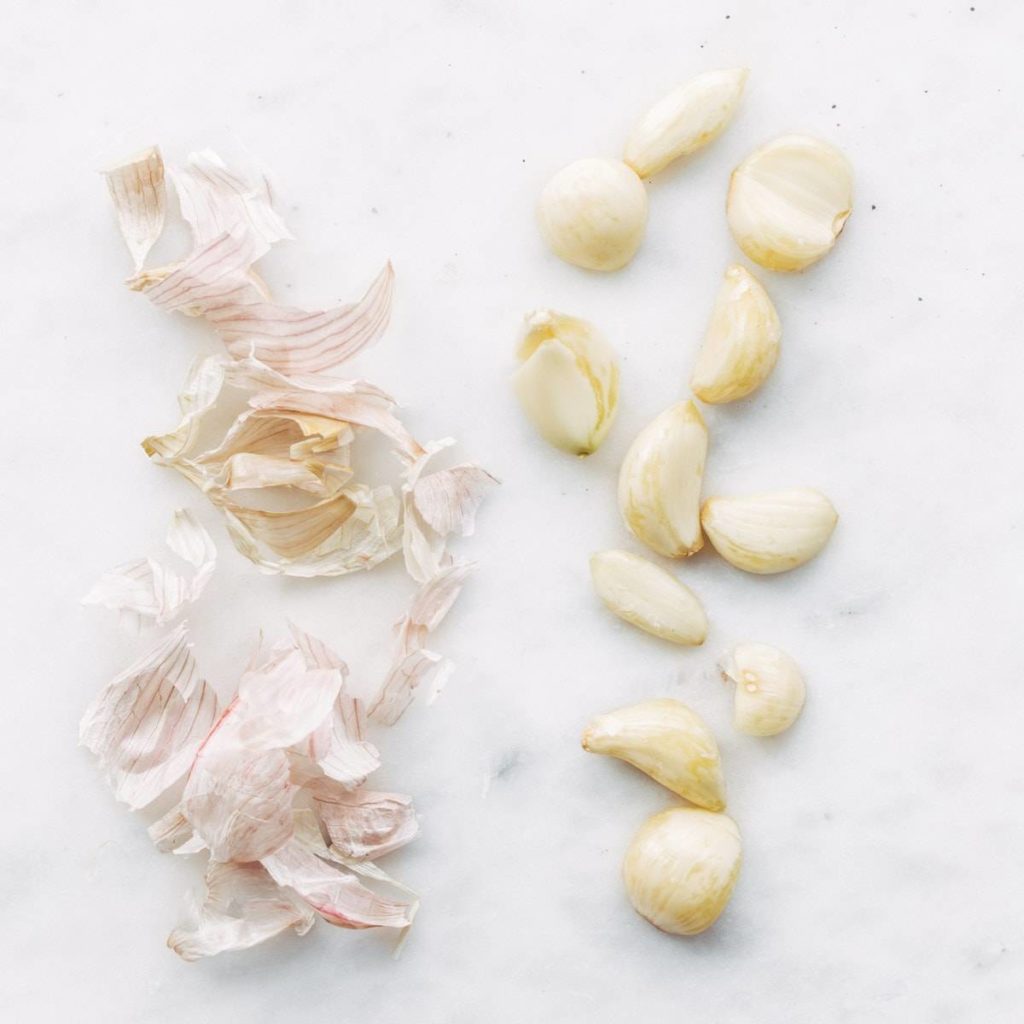That #recipefail you made last week that ended up in the trash? The potato peels that were uneaten and discarded? The suspicious, unmarked leftovers in the back of the fridge? Sound familiar? All of these are examples of sources of food waste in the home. Many of us don’t even realize how much food we waste every single day – it’s just habitual.
But we can change that! Making small tweaks to our routines in the kitchen to reduce our food waste is one of the simplest ways we can diminish our negative impact on the environment.

So…. what exactly is food waste?
Food waste is food that is safe to eat but is instead discarded during retail or once it has been purchased.
Food waste fast facts:
- Food waste is responsible for ~25% of the world’s freshwater use.
- 40% of the food produced, processed, and transported in the U.S. ends up in our landfills.
- In developed countries, about 50% of all food waste happens in our homes.
- 90 billion meals worth of food goes to waste every year in the U.S.
Clearly, food waste is a BIG problem on a global scale. By starting to acknowledge and address our food waste at home, we can save money, reduce our reliance on landfills, and decrease our contribution to methane emissions.
What are some of the biggest sources of food waste for food bloggers?
Food waste occurs along the entire spectrum of the food chain. Food is wasted during production, storage, transportation, retail, and in the home. As food bloggers, we can do our part to reduce the environmental impact of food production by buying local and creating recipes that use less meat, for example, but we can also change our behaviors during our recipe development process to reduce waste.
Because it’s our job to create recipes and share food content, it is natural that food bloggers would be prone to higher amounts of food waste than the average home cook. The sheer frequency with which food bloggers prepare meals and test recipes means that we are more likely to produce more waste.
Want to learn more about food waste and living sustainably?How to reduce food waste in your home kitchen
Plan, plan, plan.
While it may seem basic, meal planning and shopping from a grocery list is critical in reducing the amount of excess food that enters your home. Include quantities of items needed on your grocery list to avoid overbuying, and always check your pantry, fridge, and freezer first before heading to the grocery store!
When determining which recipes you develop any given week, try to make recipes with similar ingredient lists so you can avoid wasting any surplus ingredients. Need inspiration for a new recipe? Pay close attention to the ingredients you already have on hand that need to be used up before they go bad. If foods are nearing the end of their shelf life, plan a recipe around them, or store them in the freezer for later use!
Rethink the way you grocery shop.
Buy ugly
Consider buying the “ugly” produce the next time you hit the grocery store or farmers market. Misshapen apples, potatoes with blemishes, or an orange that’s “too small” – all of these items might be rejected by a grocery store because they don’t meet their standards (not because they’re unfit to eat).
Companies like Imperfect Foods and Hungry Harvest are also great options for grocery delivery of foods that might otherwise be wasted.
Shop from the bulk bins
Shop from bulk bins at the store for nuts, seeds, whole grains, and fried fruits at the grocery store to reduce packaging and to buy exactly the amount you need in your recipe so none goes to waste.
Don’t sleep on frozen produce
Consider buying frozen fruits/vegetables for recipes when possible – frozen food is much less likely to be wasted, since it doesn’t go bad as quickly as fresh produce.
Fun fact: frozen food is often more nutritious, since it is frozen immediately after harvesting, which helps to preserve the vitamins and minerals.
Revamp your storage strategies.
Did you know that the best by/sell by/use by dates have nothing to do with the safety of the food? These labels often lead to unnecessary food waste, because consumers are unaware of the true meaning of the labels.
A “Best if Used By/Before” date indicates when a product will be of best flavor or quality. It is not a purchase or safety date.
A “Sell-By” date tells the store how long to display the product for sale for inventory management. It is not a safety date.
A “Use-By” date is the last date recommended for the use of the product while at peak quality. It is not a safety date except for when used on infant formula […].
With an exception of infant formula […], if the date passes during home storage, a product should still be safe and wholesome if handled properly until the time spoilage is evident.
– The U.S. Department of Agriculture

Another easy way to reduce food waste in your kitchen is to follow the “First In First Out” strategy by organizing your fridge and pantry so that the oldest foods are placed in the front and newer foods are at the back.
This helps ensure that you use the older ingredients first, before they might spoil. Properly labeling and dating all foods stored in the freezer and/or leftovers in the refrigerator can also avoid unnecessary waste!
If you do notice that a piece of produce is aging or starting to spoil, remove it ASAP to use it, compost it, or freeze it. Why? Decaying produce emits a gas that can speed-up the ripening of produce nearby!
P.S. This fruit and vegetable storage guide is a handy tool to help increase the lifespan of your produce.
Put down the peeler
When it comes time to cook all of the delicious recipes you’ve developed, there are a few simple tweaks you can make when preparing produce to reduce food waste:
- Instead of “snapping” each asparagus stalk, feel the stalk to find where it becomes tender and cut there – you’ll waste much less!
- Remove JUST the core of tomatoes and strawberries, rather than cutting off the whole top.
- Freeze ginger root so it doesn’t go bad – you can grate it right out of the freezer!
- Don’t peel carrots, cucumbers, potatoes, eggplant, zucchini, plums, or apples. Use a coconut fiber vegetable scrubber instead and then eat the peels (Bonus: they’re a great source of fiber).
- Similarly, broccoli stalks, parsley stems, beet tops, kale stems, and celery leaves, are all edible portions of vegetables that are too often discarded. There are tons of delicious recipes out there featuring these ingredients!
- Save your vegetable scraps (i.e. those asparagus bottoms, carrot peels, leek or fennel tops, parsley stems, mushroom stems, onion skins, etc) for a homemade vegetable stock.

Nobody’s perfect…
If you’ve done your best to reduce food waste every step of the way but still have leftover food – don’t toss it in the garbage bin! Have you tried composting?
Composting is the process of recycling food scraps and yard waste by letting them decompose into a mixture that is nutrient-rich. The composted material can eventually be added back into the soil to help the soil retain moisture and reduce the need for chemical fertilizers!
By composting at home, you are keeping those leftover food scraps out of landfills. This helps to reduce methane emissions and your carbon footprint. When it comes to food-related items, you can compost fruits and vegetables, eggshells, coffee grounds, coffee filters, tea bags, and nut shells.
Curious to learn more about composting? This step-by-step guide to composting at home has everything you need to get started!
Donating leftover food is also a much better option than throwing it away. Organizations like Rescuing Leftover Cuisine can pick up excess food and deliver it to their network of local non-profits.
If you have excess canned or other non-perishable foods, check out Feeding America’s website to find a Food Bank near you.
We’d love to know! Have you found any strategies for reducing food waste during the recipe development process? Share your tips!
It was really helpful. Keep posting more
Glad to hear it!
Thank you for sharing this valuable information. I really enjoyed reading your post and gained some new insights on [topic]. Looking forward to more informative content from you.
Thanks for reading!
Great tips! We waste way too much food in the world. I always try to plan my shopping so that I can actually use everything on my list.
Having a detailed shopping list is such a good place to start!